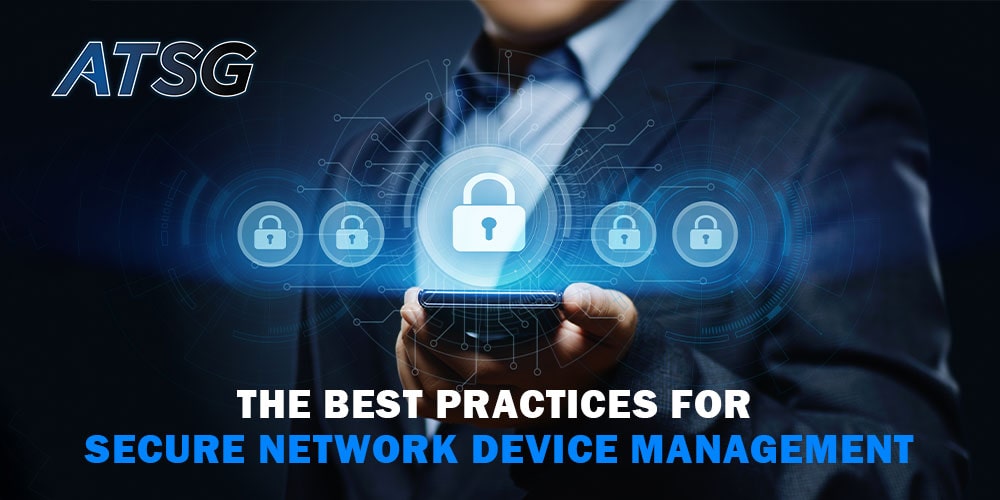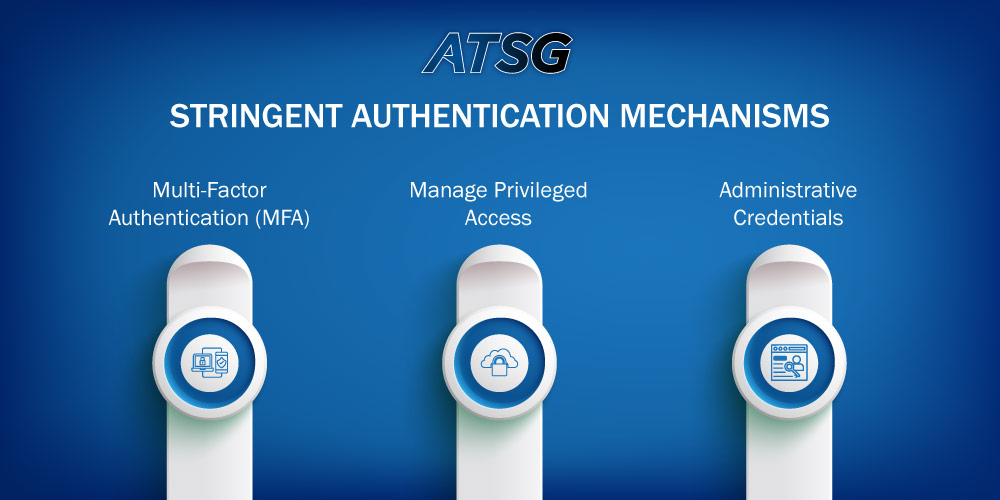The heart of every company is its Network, as it is an essential component that enables teamwork and provides access to enterprise resources. It also allows for all members of staff to share a company’s hardware, servers and services, to communicate as well as exchange data with one another.

Several devices are seamlessly integrated to build-up a network. These devices need to be kept running, to maintain the functions and management of the network. The management of network devices is also vital for successful device service and maintenance. Status overviews and real-time information allow for seamless device swaps to be prepared in advance.
Considering that these devices and servers are the main functions of every organization today, they also become the prime targets for hackers and cybercriminals. Many cybersecurity experts have begun to acknowledge that the vulnerability of such devices can cause organizational exposure. With the network management solutions of ATSG OPTX, robust mechanisms for protecting the network, and associated devices can be successfully implemented.
Let us discuss some best practices for implementing robust security mechanisms for network devices.
Stringent Authentication Mechanisms
Administrative privileges to resources can be granted to a few select users, and this process needs to be properly documented. Limiting administrative privileges for devices is crucial for security, because intruders can exploit privileges that are improperly authorized, granted widely, or not closely audited.
In some cases, bad actors can use compromised privileges to traverse networks, expand access, and take complete control of the infrastructure backbone. Organizations can mitigate un-authorized infrastructure access by implementing secure access policies and procedures.
This can be done by implementing the following additional measures, which are being offered by leading Managed Network Services (MNS) provider ATSG OPTX.

Multi-Factor Authentication (MFA)
This is a process used to validate a user’s identity. Attackers commonly exploit weak authentication controls. MFA uses at least two identity components to authenticate a user’s identity.
Manage Privileged Access
It is recommended to use a dedicated server that provides authentication, authorization and stores access related information for network device management. This server will enable network administrators to assign different privilege levels to users, based on the principle of least privilege.
Administrative Credentials
Ensure that passwords are changed regularly, and are aligned with the guidelines of technical experts and network security professionals. Moreover, stored passwords need to be kept under strong security mechanisms, and can only be accessed in extraordinary circumstances.
Regularly Updating Firmware and Software
Firmware and software updates are important for organizations, in addition to securing network devices. Updating these components can improve the security of your network devices by fixing vulnerabilities, adding encryption, or implementing new protocols.
Secondly, they can improve the performance of network devices by optimizing the code, reducing latency, or increasing through-put. The concept of updating can improve the compatibility of your network devices, by adding support for new standards, devices and applications.
Firmware and software updates can also fix bugs, errors or glitches that may affect the functionality or stability of network devices. With the help of leading solutions provider ATSG OPTX, organizations can update their firmware and software, as soon as there is a security update.
With MNS providers like ATSG OPTX, enterprises can prevent cyber attacks, data breaches and network disruption. Deploying organizations can also enhance their network efficiency, functionality, and avoid introducing new conflicts in the existing network infrastructure.
Protecting Control Plane Agreements H2
The control plane is where network devices “learn” about their environment, using various protocols to connect with neighboring devices. These protocols operating on the control plane of a network device can experience a variety of attacks, which is why it is essential to protect them.
Often, these protocols are victims to denial-of-service (DoS) attacks that can disrupt business operations and processes. If the control plane becomes vulnerable to any form of attack, the business loses connectivity services, and performance levels drop immensely.
Understanding the purpose of implementing protocol protection helps reduce the disturbance caused by malicious actors on network devices. There are many ways organizations can implement to protect the control plane, and secure each protocol used on the plane. This in turn helps with managing the network traffic more effectively.
While the mechanisms used to secure various protocols differ, regulating the traffic is done using a feature called control plane policing (CoPP). With such features, network devices can filter incoming traffic, restrict inflow, and prevent the protocol process as well as management plane from getting overwhelmed and vulnerable.
Implementing Role-Based Access Control (RBAC)
RBAC is the process of restricting user access to network configurations and resources, to boost overall network security. In RBAC, access is provided to users according to their job role. All other parts of the network are rendered in-accessible to them, ensuring no un-authorized accesses or changes are made to network resources.
Since RBAC runs on multi-user network environments, it is vital to restrict user access to network devices. A faulty change to the network can lead to network issues, which can cause a network disaster or outage. Reversing such outages can be time-consuming, which is why any change in the network needs to be ratified by network admins. Therefore, implementing RBAC is necessary for improved network security.
Enabling Network Data Encryption in Transit
In the context of networking, encryption is the process of transforming readable data into an un-readable format. This is done with a key, which is a piece of information that controls the algorithm which is used to transform the data. The key is known only to the sender and the receiver, which ensures that only the intended parties read the encrypted data.
Encryption is a vital part of ensuring the security of data in transit, as it prevents any malicious actors from reading the data. Encryption strength is determined by the length of the key used to generate it. The ability to encrypt data is an essential component of improving overall data security.
For instance, the secure socket layer (SSL), or transport layer security (TLS) protocol allows data to be securely transmitted across a network, by using encryption in data transmission. When data is encrypted, it is hidden from un-authorized people, by preventing them from understanding or modifying it.
An encrypted network is a communication network that uses some form of encoding to protect the information that is being transmitted. Service provider ATSG OPTX offers robust encryption to keep confidential information from being intercepted and “understood” by anyone other than the intended recipient.
Supervising Network Device Activities
It is essential to monitor and supervise network devices via both manual and automated systems. Checking for software releases and security advisories regularly can help maintain the security of network devices, and their optimal configurations.
Automated supervision of network devices is key to securing them from malicious activities or threats. Developing management platforms can timely alert organizations of any abnormalities within network devices.
Conclusively, network devices act as the bridge between customers and services that are required. As a result, the devices associated with networks are often exposed to vulnerabilities. If the compromise continues, hackers are able to gain entry in the infrastructure, and potentially steal business data.
Therefore, organizations need to invest in robust network security policies and solutions through ATSG OPTX. Our intelligent solutions can overcome the complex challenges of monitoring, management and security of network devices.




